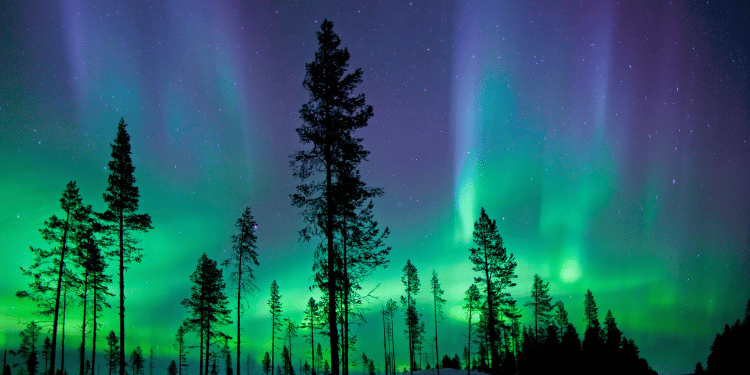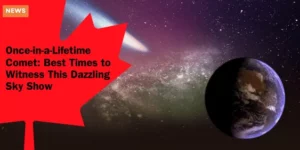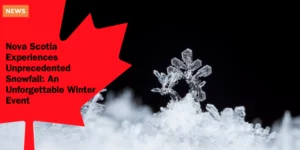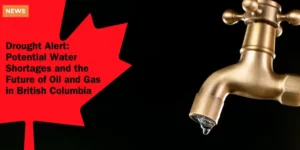Spectacular New Year’s Aurora: Complete Guide to Viewing Northern Lights Across Canada
Anúncios
Introduction to the New Year’s Aurora Event
Get ready for a dazzling start to 2024 as Canada’s night sky prepares to put on an unforgettable show.
The Northern Lights, or Aurora Borealis, are forecasted to illuminate the night sky on New Year’s Eve, providing an enchanting spectacle for those who can catch a glimpse.
Anúncios
This celestial fireworks-like display is a unique and natural alternative to the traditional vibrant explosions commonly seen at midnight celebrations.
NOAA Space Weather Prediction Center’s Strong Aurora Forecast
According to the NOAA Space Weather Prediction Center, the intensity of the expected aurora is significant.
Anúncios
Geomagnetic activity is expected to be strong due to a forthcoming G3 geomagnetic storm.
This level of activity can lead to highly visible auroras across a wide area, creating the perfect conditions for a remarkable New Year’s Eve experience.
With a rating of 5 on the OVATION scale, which ranges from 1 (minimal activity) to 9 (maximum intensity), the forecasted magnetospheric disturbances suggest vibrant and extensive auroras.
An Extraordinary Alternative to Fireworks
Fireworks have been a staple of New Year’s celebrations for centuries; however, this year, the Northern Lights offer a more extraordinary vista.
Imagine ringing in the new year not with explosive bursts but with a serene, yet mesmerizing display of green, purple, and pink hues dancing across the sky.
This spectacle is not just a visual delight but also a rare and awe-inspiring connection to nature’s wonders, making it a fitting nod to ending one chapter and welcoming another.
So, while many will opt for conventional fireworks, wise revelers will keep their eyes peeled to the skies for this breathtaking natural phenomenon.
With the right location, free from the light pollution of cityscapes, and some favorable weather conditions, Canadians can usher in 2024 under a sky painted by geomagnetic wonders, an aurora display that promises to be unlike any other New Year’s celebration.
Navigating the specifics of geomagnetic conditions and understanding their impact on auroras will help maximize viewing pleasure.
Stay tuned as we delve deeper into this fascinating subject.
 A phenomenon worth seeing
A phenomenon worth seeing
Understanding the Geomagnetic Activity
The New Year’s Eve of 2024 promises to be an enchanting night as Canada is set to witness an impressive display of the Northern Lights, thanks to some intense geomagnetic activity.
Understanding what causes this celestial spectacle and anticipating the best times to view it can enhance your aurora experience considerably.
Current Geomagnetic Activity
As of now, geomagnetic activity is rated at level 5 on the OVATION scale.
This scale ranges from 1, indicating minimal activity, to 9, representing maximum intensity.
The level 5 rating suggests a moderate but substantial potential for observing the auroras.
Specifically, it means that the Earth’s magnetic field is bustling with activity, facilitating the beautiful phenomenon of the Northern Lights.
Expected G3 Geomagnetic Storm
Foreseen by the NOAA Space Weather Prediction Center, a G3 geomagnetic storm, categorized as strong, is expected to begin early on Tuesday.
These storms are categorized on a scale from G1 (minor) to G5 (extreme), with G3 indicating a level capable of producing vibrant aurora displays.
The storm’s onset on Tuesday does not limit the spectacle to a brief window; instead, it potentially extends the viewing period well into Tuesday evening and Wednesday morning.
Potential Viewing Window
Aurora enthusiasts should be prepared for a prolonged viewing window.
While the storm is expected to kick off early Tuesday morning, the resulting light display could continue to illuminate the sky beyond the initial hours.
This extended window increases the chances of witnessing the Northern Lights, particularly if local weather conditions cooperate.
As you plan your New Year’s Eve activities, keeping an eye on the geomagnetic activity forecasts will be essential.
The vitality of these emissions and their interaction with the Earth’s magnetic field will largely determine the visibility and intensity of the auroras.
With the geomagnetic storm’s strength and timing aligning favorably, 2024’s New Year’s Eve might just offer one of the most memorable light shows Canada has seen in recent history.
By understanding the geomagnetic activity and its implications, you can better position yourself to enjoy this natural wonder.
The right location and timing could turn your New Year’s celebrations into an extraordinary experience.
Optimal Viewing Locations
For those eager to witness the Northern Lights this New Year’s Eve, selecting the ideal location is crucial.
Canada offers ample opportunities, but some advance planning is necessary to ensure you get the best possible view.
Best Visibility in Regions Away from U.S. Border
The Northern Lights, or Aurora Borealis, are most vibrant in areas further from the U.S. border.
The light show is best seen in Canada’s northern regions, where geomagnetic activity is higher.
Steer clear of southern areas, as the celestial display tends to be less intense the closer you are to the U.S. border, according to the NOAA Space Weather Prediction Center’s forecast.
Need for Dark Areas Distant from Major Urban Centers
Light pollution from urban centers can severely hinder your viewing experience.
For the clearest view, aim to find a spot far from city lights.
National parks, rural areas, or even secluded countryside locations offer some of the best environments for observing the Aurora Borealis.
The absence of artificial light allows the vibrant colors of the Northern Lights to stand out more vividly against the dark sky.
Importance of Minimal Light Pollution for Clear Viewing
Light pollution doesn’t just reduce the brilliance of the aurora; it can completely obscure it.
Check for local light pollution maps online to identify the optimal dark-sky areas nearby.
Minimal light interferes with the natural darkness required to fully appreciate this incredible natural phenomenon.
The darker the surroundings, the more spectacular the Northern Lights will appear.
Finding the perfect spot away from urban lights and close to nature not only enhances your viewing experience but also immerses you in the tranquility of the night.
Whether you’re heading to the Maritimes or the remote areas of British Columbia, be prepared for an unforgettable celestial event.
Ensure you are all set for the best possible view by also considering weather conditions impacting visibility.
Weather Conditions and Visibility
The excitement of witnessing the Northern Lights on New Year’s Eve may be tempered by one significant factor: weather conditions.
For a clear and unobstructed view of the Aurora Borealis, the skies need to be as clear as possible.
Unfortunately, the forecast indicates that most of Canada will experience overcast conditions on New Year’s Eve.
This cloud coverage can significantly impact visibility, leaving many Aurora enthusiasts disappointed.
Cloud Coverage Across Canada
The widespread cloud coverage predicted extends across the majority of the country, limiting the areas where the Northern Lights will be visible.
The overcast conditions mean that even though the geomagnetic storm is generating a strong aurora, the clouds will obscure the view for many regions.
However, there is still hope for those determined to witness this celestial event.
Certain parts of the Maritimes and British Columbia are forecasted to have clearer skies.
These regions present the best opportunities for Aurora viewing, allowing viewers to catch the mesmerizing dance of lights across the night sky.
Clear Viewing Opportunities
For those situated in the Maritimes and British Columbia, the local weather could be a significant advantage.
The clearer skies will provide an optimal backdrop for the Northern Lights, enhancing the contrast and vibrancy of the phenomenon against the dark night.
This makes the aurora appear even more spectacular and memorable.
It’s essential to monitor local weather forecasts as the event approaches.
This will help enthusiasts navigate to locations with the best chances of clear skies.
Keep an eye on changes in cloud coverage and adjust plans accordingly to maximize the viewing experience.
Importance of Weather Conditions
The impact of weather conditions on viewing the Northern Lights cannot be overstated.
Cloud coverage is the primary detractor, as even the most vibrant auroras can be completely hidden by heavy clouds.
Therefore, understanding and monitoring weather forecasts is crucial for anyone planning to observe the Northern Lights on New Year’s Eve.
Although the widespread cloud coverage might seem daunting, the potential clear patches in the Maritimes and British Columbia offer a glimmer of hope.
By staying informed and flexible, enthusiasts can increase their odds of catching the awe-inspiring display of the Aurora Borealis.
Remember, clear skies are vital for a successful viewing experience.
As you prepare for the event, keep an eye on the weather and choose your location wisely.
Viewing Tips and Recommendations
As you prepare to experience the Northern Lights on New Year’s Eve, selecting the right location and timing is crucial.
Here are some tips to enhance your viewing experience.
Selecting Locations Away from City Light Pollution
To witness the Aurora Borealis in all its splendor, it is vital to find a dark location, well away from city lights.
Light pollution from urban areas can significantly diminish the visibility of this celestial display.
Consider the following options for optimal viewing locations:
- 🍁 National Parks and Reserves: These vast, natural areas offer excellent dark skies and minimal light interference.
- 🍁 Rural Countryside: Anywhere far from urban centers would be ideal. Think open fields, remote countryside, or coastal areas.
- 🍁 Elevated Spots: Hills, mountains, or elevated terrains can provide clearer skies and reduced light disruption.
Best Timing for Observation During the Geomagnetic Storm
Timing is everything when observing the Northern Lights. The NOAA Space Weather Prediction Center has forecasted a G3 geomagnetic storm expected to peak early Tuesday.
Here’s how you can maximize your chances:
- 🍁 Early Night Hours: While the storm is forecasted to peak early Tuesday, start your observation shortly after dusk on New Year’s Eve. This way, you catch any early activity.
- 🍁 Prime Viewing Window: Keep your eyes peeled from late evening into the early morning hours of Wednesday. This period offers the best chance of strong auroras.
- 🍁 Patience and Persistence: Be prepared to spend several hours outdoors. Aurora activity can be unpredictable and having patience can lead to a rewarding experience.
Consideration of Local Weather Forecasts for Optimal Viewing
Weather conditions play a pivotal role in your ability to see the Northern Lights.
Here are some tips to navigate weather-related challenges:
- 🍁 Check Regional Forecasts: Regularly monitor weather forecasts for your intended viewing area. This will help you anticipate changes and adjust plans accordingly.
- 🍁 Cloud Coverage: With overcast conditions predicted across much of Canada, clear skies are your best friend. Focus on regions such as the Maritimes and parts of British Columbia, where clearer skies are forecasted.
- 🍁 Real-Time Updates: Utilize weather apps that provide real-time updates and satellite imagery to track cloud movements and maximize your viewing opportunities.
Braving the winter cold for a chance to see the Northern Lights will be an adventure worth remembering.
As you make these preparations, you’ll be ready to witness one of nature’s most mesmerizing light shows.







